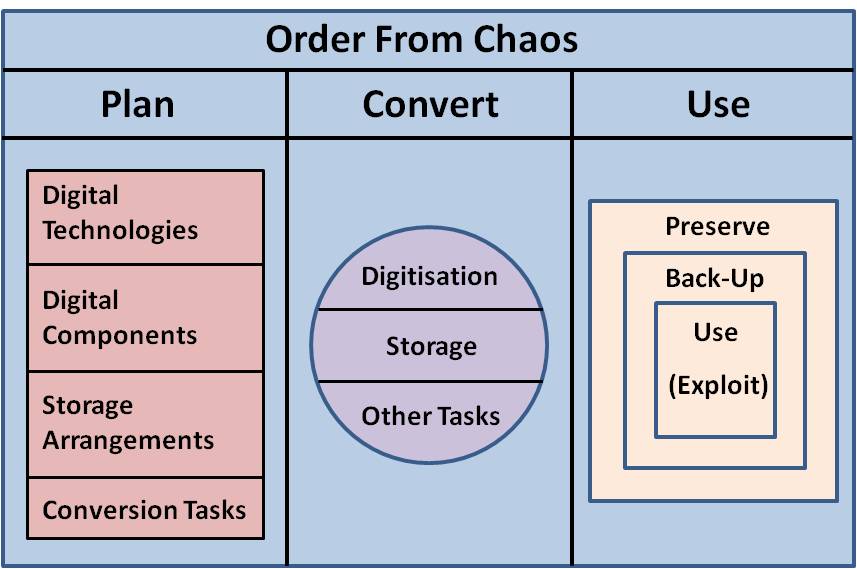I’ve completed my quick trawl through all the entries in this blog looking for insights about Order From Chaos. Whenever I came across some relevant text I copied it into a spreadsheet and then allocated one or more categories to it. The categories were not pre-determined – they developed as I went through and I ended up with about 20 of them. I also checked the OFC White Paper which I produced in 2004. With all this as background I set out to try and produce an updated view of what I mean by Order from Chaos in the light of my experiences over the last five years. Here’s my first attempt:
Order From Chaos (OFC), in this context, refers to the organisation of any set of things with the assistance of digital technologies. Examples of such things include: Music Collections, Loft Contents, Family Photos, Household Files, and Letters. Such material usually (but not always) starts out being in a purely physical form. Therefore, undertaking OFC usually entails some element of Planning followed by a Conversion process. The result may be purely digital or a hybrid of both physical and digital. Either way the newly organised material can be put to use in its new form, and possibly reproduced in different forms. Any new digital components will require Back-Up and Preservation procedures to be applied.
The Planning that needs to be done usually includes the identification of the digital technologies to be used; the design of necessary digital components such as file title formats and spreadsheets; a description of the storage arrangements for both physical and digital components; and an outline of the conversion process that is to be undertaken.
Conversion involves digitising the physical components, implementing the storage arrangements, and doing anything else that is necessary to ensure that the transformed set of material can be easily and effectively used.
Back-up procedures need to be put in place to ensure that both the physical and digital components are protected from loss.
Preservation procedures need to be put in place to ensure that the digital components do not become obsolete and inaccessible, and that the physical components do not deteriorate.
These concepts are all represented in the model below. When OFC techniques are applied to a new set of things, each of the items in the model needs to be addressed.
 To test the usefulness of the model I’m going to apply it retrospectively to the OFC transformations I have reported on in this blog.
To test the usefulness of the model I’m going to apply it retrospectively to the OFC transformations I have reported on in this blog.
